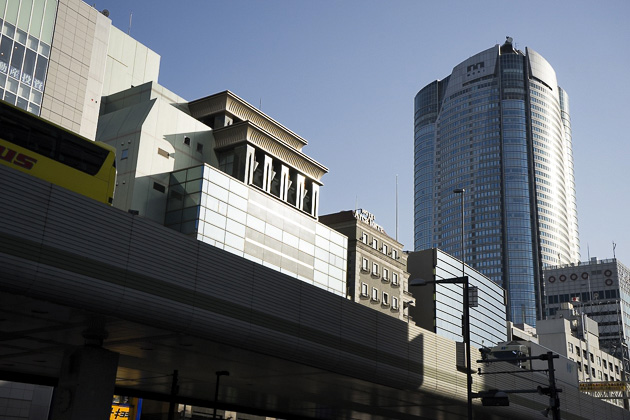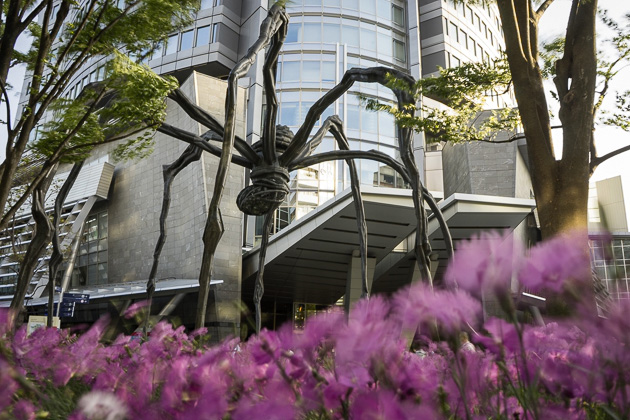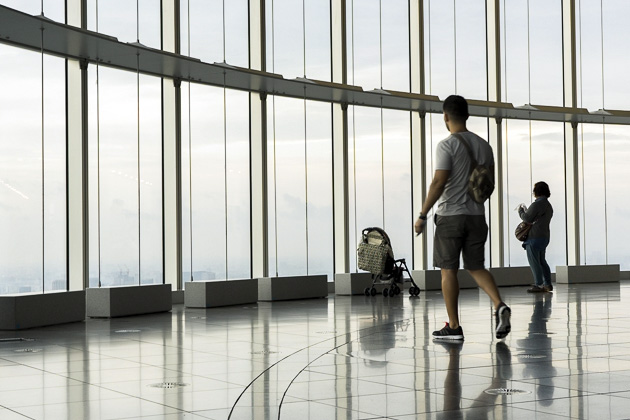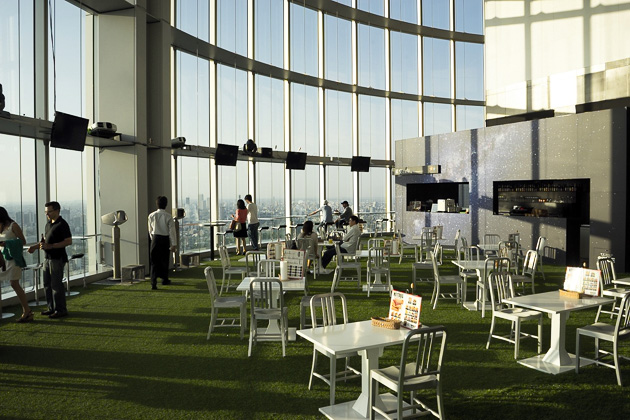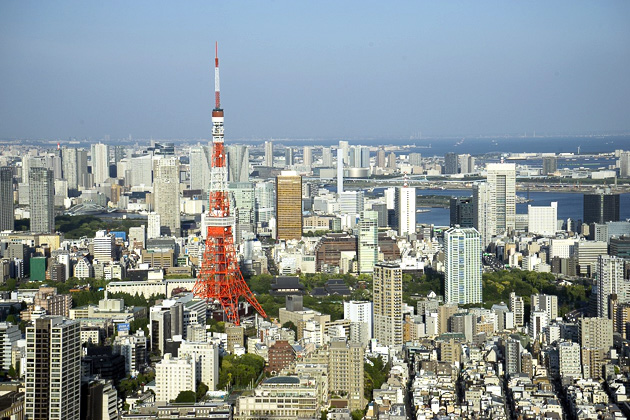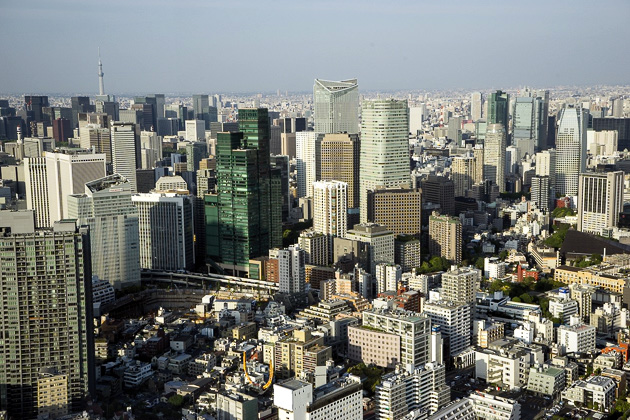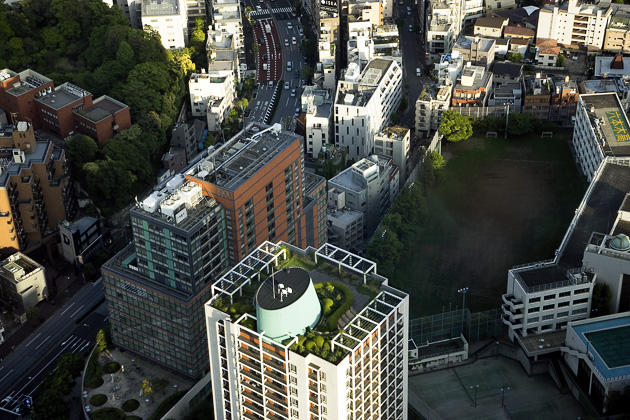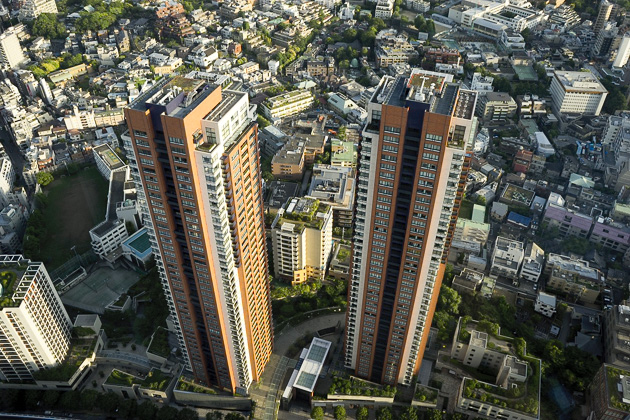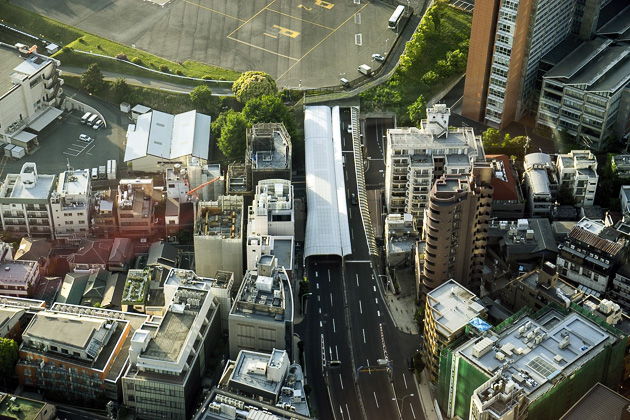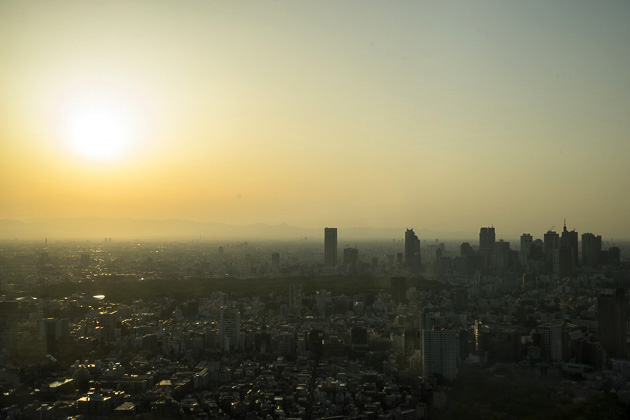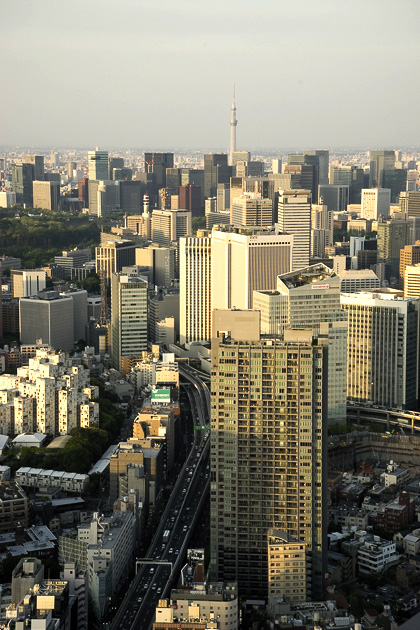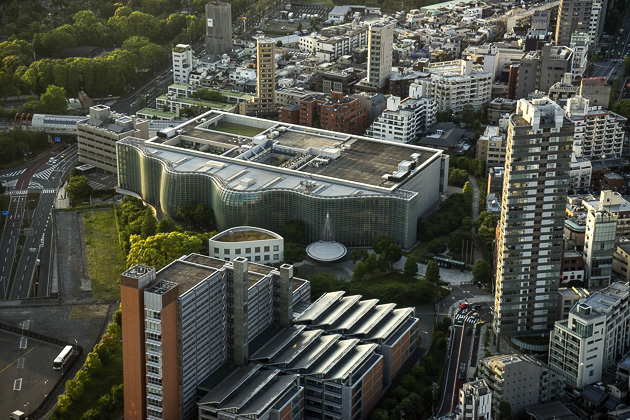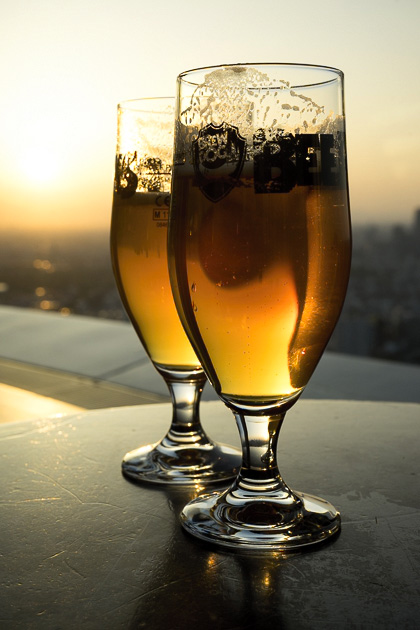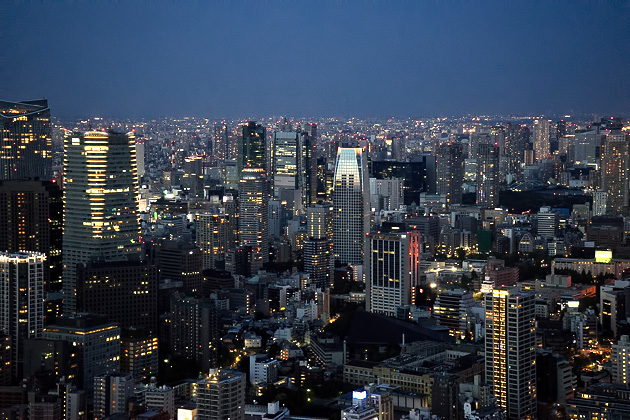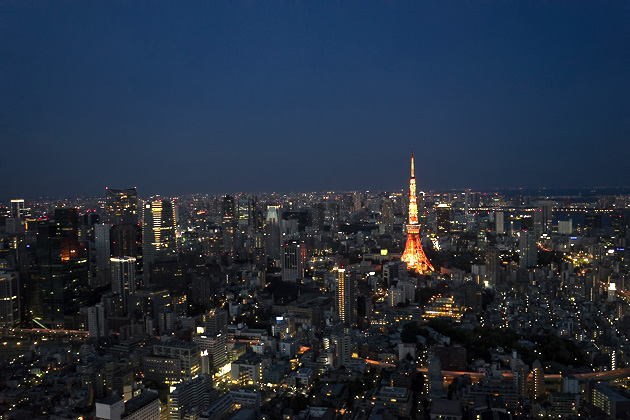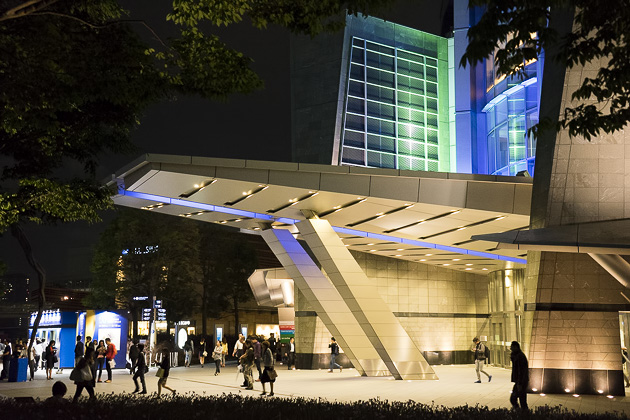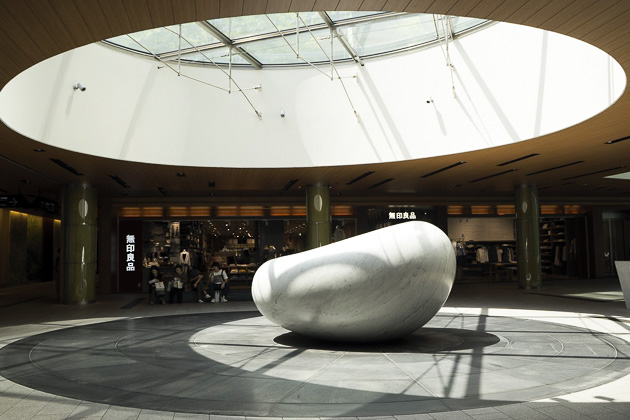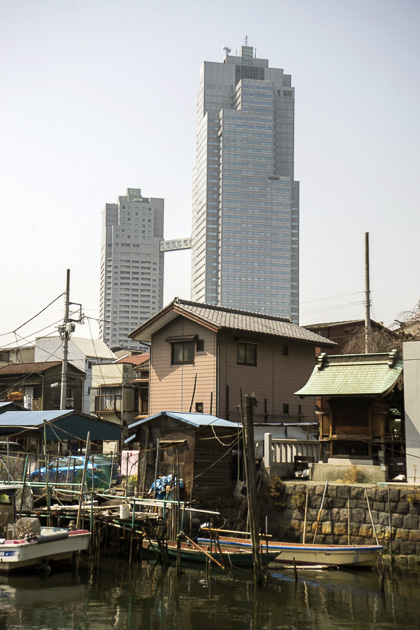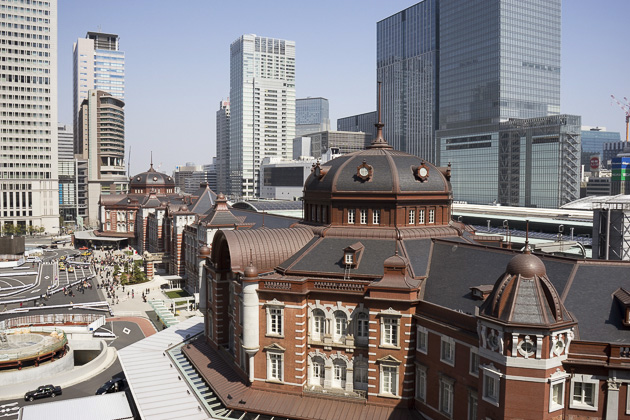The View from Roppongi Hills
Built for a whopping four billion dollars, the mega-complex known as Roppongi Hills opened to the public in 2003. With museums, malls, theaters, parks, hotels, hundreds of stores and restaurants, along with some of the city’s most expensive apartments, Roppongi Hills would love to eat up several of your Tokyo days. We spent about an hour there.
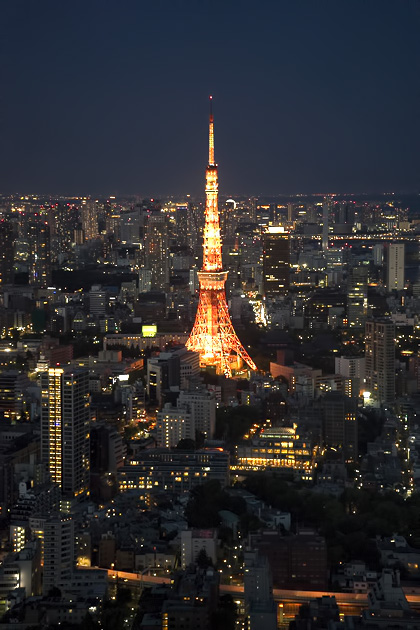
Until a construction tycoon named Minoru Mori decided to revitalize it with an ambitious development project, Roppongi had been a seedy neighborhood where young and/or shady people went to party and get blitzed. Actually, it still is. The first thing we saw here was an absolutely wasted woman attempting to climb into a cab. Sensing imminent disaster, we paused to watch. As if on cue, she stumbled and fell face-first onto the concrete curb. It looked awful, but she picked herself up without any visible damage, so we felt fine about laughing. This was at one in the afternoon, by the way.
It was a pratfall which set the tone for our visit to in Roppongi Hills. There’s something about the place we didn’t like. It’s too showy. Too fake. It’s both ritzy, and just below the surface, totally trashy. Roppongi Hills is a rich, drunk woman face-planting before getting into her cab.
With outdoor loudspeakers that blare late into the night, and a confusing maze of walkways which make navigation a nightmare, Roppongi Hills isn’t a favorite among its neighbors. Most horribly, a boy was crushed to death in the mall’s revolving doors because the safety sensors had been placed too high, and weren’t able to detect his presence. It was later revealed that the revolving doors had been a known safety risk, and had caused at least 32 accidents prior to the child’s death. This fact had been concealed from investigating authorities, and the ensuing scandal turned local opinion firmly against Roppongi Hills.
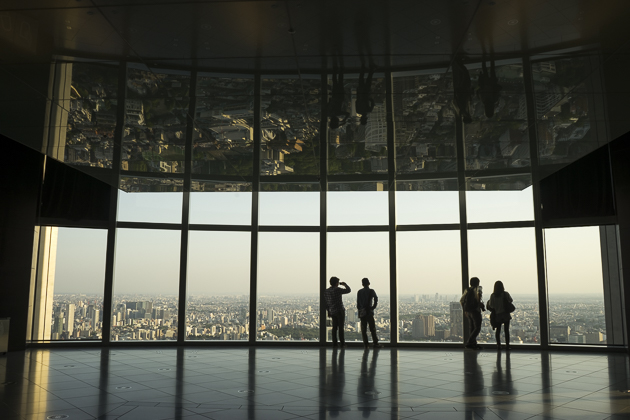
So we were already antagonistic before arriving. We skipped past the high-end shopping opportunities, and marched straight toward the 54-story Mori Tower, through legs of a giant spider. Courtesy of French artist Louise Bourgeois, this outdoor sculpture looks neat, but its spindly, organic shape is completely out-of-place in sleek and angular Roppongi Hills. “Trying too hard,” I hissed at Jürgen. “And does her name have to literally be Bourgeois?”
Anyway, the 360° view from Mori Tower is renowned as one of the best in Tokyo. You can see the SkyTree in the north, the Landmark Tower way down south in Yokohama, and even Mount Fuji on a clear day. Usually, you can pay extra to go onto the outdoor helipad for an even higher view, but the wind was too strong during our visit. That was fine by me, because it allowed us more time to enjoy happy hour at the bar.
Apart from our visit to the tower, we paid short shrift to the rest of Roppongi Hills. The museum at the top of the Mori Tower looked interesting, but was overly expensive, and we didn’t have any desire to wander through the mall. But such indifference seems to be more an exception than a rule. Roppongi Hills has become a bonafide Tokyo tourist attraction, drawing 26 million visitors in its first six months, each of whom spend an average of $100. That’s impressive, and despite our own misgivings about the complex, it’s probably worth a look.
